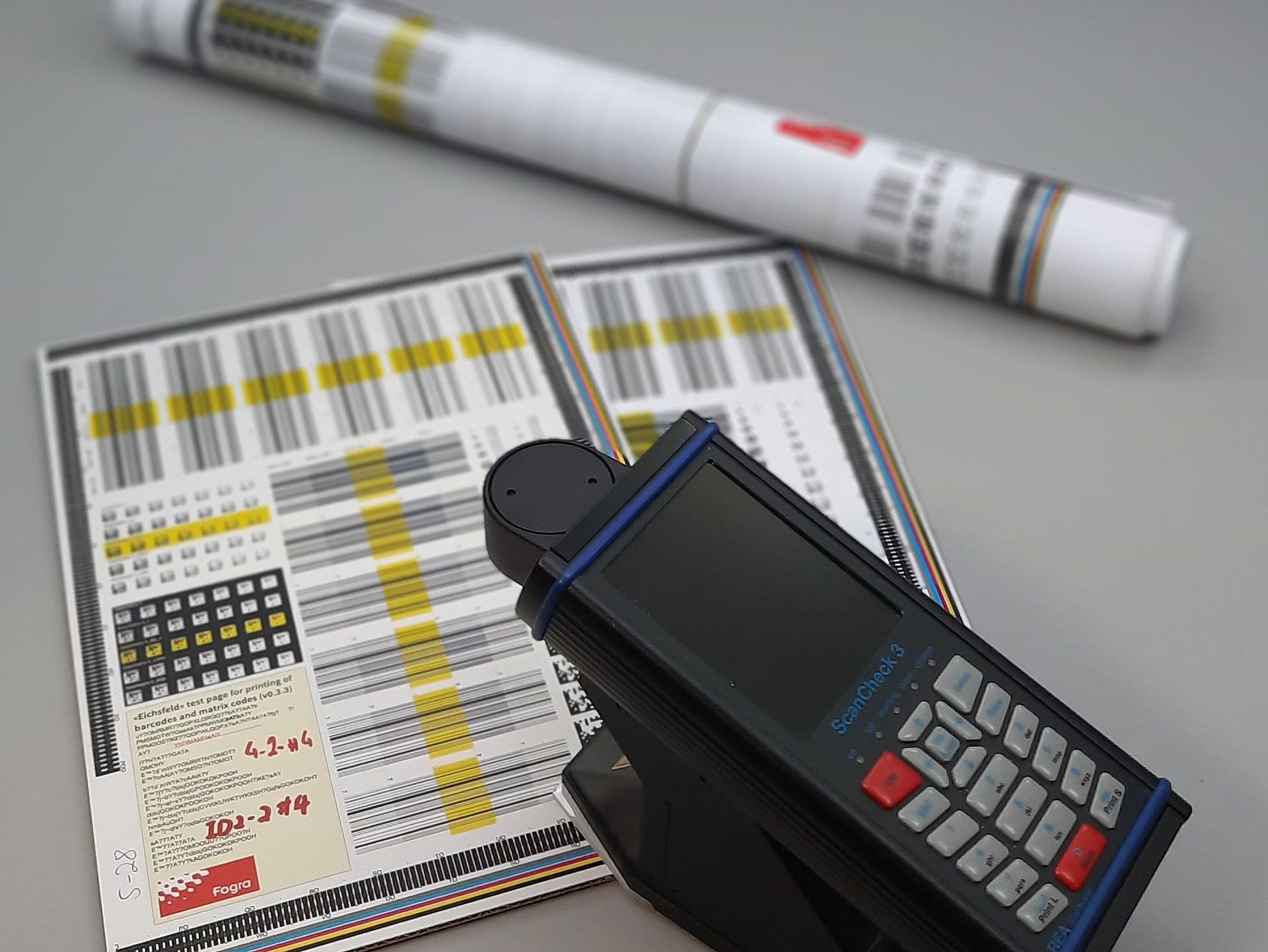Topic of your interest
Almost all products of modern life today carry coded information. Manufacturer data, product identifications, prices, article numbers and much more are translated into machine-readable symbols . However, these symbols must also be read manually at supermarket checkouts, at the various applications in the retail industry (POS, Point-of-Sale) as well as at many points of the operational goods logistics, error-free, fast and reliable. The use of barcode and matrixcodes for the identification or marking of objects has been esteblished for years. These mature processes are being disruptively changed by the availability of highly productive inkjet printing, which is inexorably advancing.
The biggest problem for print service providers is the high variability in the legibility of barcodes or matrix codes on inkjet printed products. These problems are due to the imaging technology used in inkjet printing. The precise placement of ink droplets with a volume of 2-50 pL (picoliters) at web speeds of up to 6 m/s results in a printed image that in part does not meet the internationally defined requirements for the readability of 1D and 2D codes. The lack of readability of bar codes is of course not an intrinsic property of inkjet printing per se, but the result of the printing materials and high printing speeds that are usually used from an economic point of view.
Solution steps
In the first of 3 focal points, a PDF-based checking and correction tool for 1D and 2D barcodes and a test form with easy-to-use quality indicators will be developed. This correction is of both geometric and repro-technical nature and includes application-related bar width changes as well as optimized colors settings (separations) of background and module/bar elements.
The second focus is the systematic variation of process parameters in high-speed inkjet and the investigation of its influence on the readability of code types typical for the industry. The aim is to identify optimal process parameters in water-based and UV-based inkjet printing. They are published in the form of recommendations and corrective measures for the process control and quality assurance of small and medium-sized inkjet printing service providers, following the successful model of previous IGF projects.
The third focal point deals with quality assurance issues spanning value chains. This includes primarily the investigation of device and model deviations of relevant test devices (verifiers).
Achieved results
The “Fogra Barcode Test Suite” was developed as part of the research project. It enables the derivation of important information a visual evaluation – all technical parameters can be determined by a metrological evaluation using Verifier devices. For this purpose, an XLS-based evaluation program was created, with which optimal parameters can be determined in each case. A video tutorial for this spreadsheet can be found here.
An examination of the device agreement showed practically no deviations between the verifiers for high-quality originals. However, the device agreement decreases with poorer quality codes.
Further evaluation showed that the alignment to the print head is not as important as originally assumed when it comes to the printing properties. Barcodes aligned parallel to the print head performed only slightly better than those with vertical alignment. When creating the barcodes, it turned out that the codes generated in pure black performed best.
Of the factors that can be influenced by the print provider, the bar width reduction emerged as the most decisive. An optimum of 30% was identified for 1D codes and 12% for 2D codes. A developed program for the corresponding data verification of 1D and 2D codes is available free of charge within the pdfToolbox from Callas.
Publications and Results
| Title | Description/abstract | Version | Date | File type | File size | Download |
|---|---|---|---|---|---|---|
| Fogra Barcode testform | Fogra Barcode Testform (Eichsfeld Test Page) | V 0.33 | 18.03.2020 | 113 KB | Download | |
| Fogra Barcode Testform: How to Print | Guide How-to-Print the Fogra Barcode Testform | V 1.0 | 18.03.2020 | 58 KB | Download | |
| Description of Fogra Barcode Testform (DE) | Detailed description of Fogra Barcode Testform (German) | V 1.0 | 18.03.2020 | 124 KB | Download | |
| Evaluation of Fogra Barcode Testform | Excel Spreadsheet for an easy evaluation of the Fogra Barcode Testform | 28.10.2020 | xlsx | 4 MB | Download | |
| Extended evaluation barcode project | Excel Spreadsheet with an extending evaluation for the Barcode Project | V 1.0 | 16.10.2020 | xlsx | 639 KB | Download |
| Proposed Annex to ISO 15416 to evaluate 1D Barcode uniformity | Determination of barcode uniformity with the BU-Score | 01.03.2021 | 692 KB | Download |



